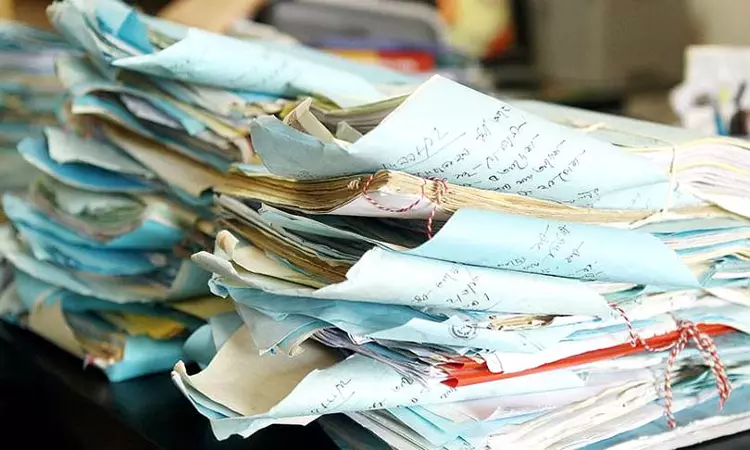Unclogging India's Legal System: Why We Should Start It Smartly By Focusing On Corporate Cases First?
Akshat Khetan
19 Aug 2024 3:06 PM IST

Let's admit it, India's dire problem of unresolved court cases has been a problem for some years now. Prior to the pandemic itself, the number of pending cases stood in millions. The official data from e-courts Sevices shows 6.11 million cases pending at the high-court level while 44.53 million remain pending at the taluka or district level as of 2024.
Pending cases in millions have translated into a vast number of legal disputes waiting for a verdict. This in turn has not only increased the strain on the judicial system but also has maligned the image of India's legal system.
Several minds have suggested different solutions to increase the legal efficiency. And, at least four solutions have been explored and implemented so far. These include solutions such as increasing the number of judges, adopting fast-track courtrooms to handle the growing caseload, mediation and arbitration techniques and even virtual courtrooms. The other benefit for methods such as ADR (alternate dispute redressal) and virtual courts is their reasonable low-cost over traditional litigation. More importantly, solutions such as online case filing, virtual hearings, and digital record management can also streamline court processes and improve a court's overall efficiency.
Courts such as Faridabad in Haryana launched a virtual court as early as 2019 to streamline traffic challans across the state. This was initiated as part of the 2007 eCourts project and as of 2023, 20 virtual courts existed across 16 states and union territories. Experts have also noted that solutions such as local forums in the form of Lok Adalat systems could comprise community-based forums where volunteers could mediate several cases before, they could even reach the high courts. Such lower courts can strengthen the functioning of Gram Nyayalayas too, the village-level courts in rural areas, which can provide easier access to justice for people in remote locations and handle minor disputes, reducing the burden on higher courts.
The problem unfortunately is not the lack of a system but the lack of faith in an available system. Call it popular culture or people's reluctance, one fails to acknowledge the change at the grass-root level. Currently, many experts compare India's legal system with western counterparts such as United Kingdom, America, or Germany, however the one thing that differentiates India is its sheer volume of cases that can be created. Hence, rather than comparing the legal pendency with other countries, we need to evaluate at scope for improvement; brainstorm on the low hanging fruits; scout for particular areas to improve a specific practice; apply the solution; showcase the strategy; and emulate it in other sectoral areas.
On the corporate side, for instance, the availability of NCLT courts has bolstered India's legal framework and is certainly a welcome move. However, despite the availability of an NCLT tribunal, the overall pendency has not really come down. In fact, as of January 2023, 21,205 cases were pending of which nearly 13,000 cases were pending for just insolvency alone. The statistics provided by Minister of state for corporate affairs, Rao Inderjit Singh as a parliamentary answer presents a worrying tale.
The summary from NCLT courts is clear - 15 benches and 40 members are expected to tackle and clear not just the pending cases but also new cases that emerge before them. In Financial Year 2022, the NCLT hit a sweet record of closing 8,619 cases of the 9,277 cases – a sublime 92% strike rate. But, in simple cricketing language, the courts would have to score more than a run every ball. And, if need be, smash a few sixes and fours out of the park.
To enable the NCLT courts to be able to hit the ball out of the park, we would need to have a system that keeps in mind simple factors such as information symmetry. This is doable with computerisation and artificial intelligence. Analysis also indicates the need for transferring cases from other tribunals such as Debt Recovery Tribunal (DRT) as a measure to reduce administrative delays. That, besides increasing the number of benches, members, and para-legal staff. Establishing dedicated benches to tackle specific cases could also help expedite and improve the strike-rate. More importantly, corporate India, needs to emphasize on the cost of arbitration. Learned consuls should hence strive to educate their clients on alternate legal mechanisms which could reduce the strain on the legal system.
Addressing India's pendency problem requires a collective will from the judiciary, government, and citizens. That may sound cliched, but in reality, what India needs is one success story. And that could be the corporate side of the legal structure. Once we have a success story there, we could rightly emulate it in other practices such as criminal and civil cases. In legal parlance, the oft-quipped phrase is 'where there's a will, there is court.' We need to change that to 'Show us the will, we will show you the way!'
Author:Akshat Khetan is a corporate and legal advisor (Twitter @akshat_khetan). Views are personal.

